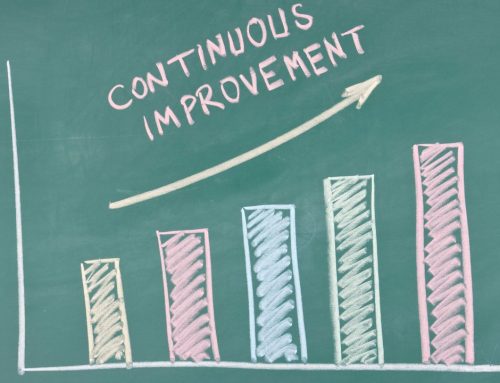
What is one of the best ways to get reliable information about a product?
In a world saturated with products vying for attention, consumers often find themselves standing at the crossroads of choice, seeking the most reliable information to guide their decisions. The digital marketplace, with its vast expanse of reviews, expert opinions, and diverse sources, can be both a boon and a challenge. Amidst this complexity, one crucial question echoes: What is one of the best ways to get reliable information about a product?
This article migh interested you: “What is the most expensive car in the world?“
What is one of the best ways to get reliable information about a product?
What is one of the best ways to get reliable information about a product? One of the best ways to get reliable information about a product is to read reviews from multiple sources. Here are some tips to ensure you’re getting useful and unbiased information:
- Customer Reviews: Look for customer reviews on various platforms, such as the product’s official website, e-commerce sites like Amazon, or retailers that carry the product. Pay attention to reviews from verified purchasers, as they are more likely to have actually used the product.
- Third-Party Review Websites: Check independent review websites that specialize in product evaluations. These sites often conduct hands-on testing and provide detailed insights into the pros and cons of a product.
- Professional Reviews: Seek out reviews from experts and professionals in the industry. Look for publications or websites that specialize in reviewing products within the category you’re interested in.
- User Forums and Communities: Join online forums or communities related to the product or brand. Users often share their experiences, troubleshooting tips, and honest opinions, providing valuable insights.
- Ask for Recommendations: Seek recommendations from friends, family, or colleagues who have used the product. Personal experiences can give you a more trustworthy perspective.
- Social Media: Check social media platforms for discussions and reviews. Many brands have official pages where customers share their experiences, and you can also find user groups dedicated to specific products.
- Video Reviews: Watch video reviews on platforms like YouTube. Video reviews often provide a more in-depth look at the product, demonstrating its features and functionality.
- Company Website: Visit the official website of the product or the manufacturer. Companies often provide detailed information, specifications, and sometimes customer testimonials.
- Compare Multiple Sources: Cross-reference information from different sources to get a comprehensive understanding of the product. This helps to filter out biases and get a more balanced view.
- Consider the Source’s Credibility: Be cautious about the credibility of the source providing the information. Some reviews may be biased, sponsored, or written by individuals with specific interests.
What makes a product reliable?
A reliable product is one that consistently performs as expected over time, meeting or exceeding the user’s requirements and expectations. Several factors contribute to the reliability of a product:
Quality of Materials and Construction:
- The use of high-quality materials in manufacturing contributes to a product’s reliability.
- Robust construction methods and attention to detail help ensure that the product can withstand normal usage without premature wear or damage.
Durability:
- A reliable product is durable and can withstand regular use without breaking or degrading quickly.
- Durability often depends on the materials used, design considerations, and the manufacturing process.
Performance:
- A reliable product consistently performs its intended functions without unexpected failures or errors.
- Users should be able to depend on the product to deliver the promised level of performance.
Functionality:
- The product should meet the specified requirements and offer the features and functions that users expect.
- Consistent and effective functionality contributes to a positive user experience.
Safety:
- A reliable product is safe to use and complies with relevant safety standards.
- Manufacturers should conduct rigorous testing to ensure that the product does not pose risks to users during normal operation.
Consistency:
- Consistency in manufacturing processes helps ensure that each unit of the product is of the same high quality.
- Users should have a similar experience with the product regardless of when or where it was purchased.
Reliability Testing:
- Manufacturers often conduct reliability testing during the product development phase to identify and address potential issues.
- This may involve stress testing, endurance testing, and other evaluations to simulate real-world conditions.
User Feedback:
- Positive feedback from users who have used the product over an extended period can be an indicator of its reliability.
- Conversely, negative reviews or reports of frequent issues may raise concerns about the product’s dependability.
Warranty and Support:
- A solid warranty and responsive customer support indicate that the manufacturer stands behind the product’s reliability.
- A warranty provides assurance to consumers that the company will address any defects or issues that may arise.
Longevity:
- A reliable product is designed to have a reasonable lifespan. It is not prone to premature obsolescence or failure.
- Longevity is an important aspect of sustainability and contributes to overall product reliability.
What is reliability when it comes to a product or service?
Reliability in the context of a product or service refers to the consistent and dependable performance of that product or service over time. It is a key factor that contributes to customer satisfaction and trust in a brand. Here’s how reliability is commonly understood in both product and service contexts:
Reliability in Products:
- Consistent Performance: A reliable product consistently performs its intended functions without unexpected failures or errors. Users can depend on it to operate as expected.
- Durability: Reliable products are durable and able to withstand normal wear and tear. They don’t break or degrade quickly, providing a longer usable lifespan.
- Quality Construction: The reliability of a product is often tied to the quality of its materials and construction. High-quality components and manufacturing processes contribute to a more reliable end product.
- Low Failure Rate: A reliable product has a low likelihood of failure or malfunction. It functions as intended without frequent breakdowns or issues.
- Consistent Quality Control: Reliable products are subject to consistent quality control measures during the manufacturing process to ensure that each unit meets the specified standards.
- Adherence to Specifications: A reliable product meets or exceeds the specifications provided by the manufacturer. It delivers the features and performance that users expect.
Reliability in Services:
- Consistent Service Delivery: A reliable service is consistently delivered according to the agreed-upon terms and conditions. It meets the expectations of the customers each time it is rendered.
- Timeliness: Reliable services are provided in a timely manner. Deadlines and service delivery schedules are consistently met without unnecessary delays.
- Accuracy and Consistency: Information provided by a service, such as customer support or information systems, is accurate and consistent. Users can trust the information they receive.
- Availability: A reliable service is available when needed. This includes consistent uptime for online services, availability of customer support, and accessibility of resources.
- Dependable Customer Support: Reliable services often come with dependable customer support. Users can reach out for assistance, and their concerns are addressed promptly and effectively.
- Reliability in Communication: Clear and reliable communication is crucial in services. Customers should be informed of any changes or issues, and communication channels should be consistent and responsive.
- Security and Privacy: In services, reliability also extends to the security and privacy of customer data. A reliable service ensures the protection of sensitive information.
What are the 4 views of consumer decision making?
Consumer decision-making is a complex process influenced by various factors. The four main views or models that attempt to explain consumer decision-making are:
Economic View (Rational Model):
- The economic or rational view of consumer decision-making assumes that individuals make decisions based on a rational evaluation of costs and benefits.
- Consumers are seen as logical decision-makers who aim to maximize their utility.
- This model suggests that consumers gather information, weigh the pros and cons, and make choices that provide the greatest satisfaction or value for money.
- Limitations: This model may oversimplify decision-making by not accounting for emotional or psychological factors that influence choices.
Psychological View (Emotional Model):
- The psychological or emotional view emphasizes the role of emotions, perceptions, and psychological processes in decision-making.
- According to this view, consumers are influenced by their attitudes, beliefs, motivations, and emotions when making choices.
- Emotional responses, social influences, and past experiences are considered crucial factors in shaping consumer decisions.
- Limitations: It may downplay the role of rational thinking and may not fully account for the impact of external factors on decision-making.
Social View (Social Model):
- The social view of consumer decision-making emphasizes the influence of social and cultural factors on individual choices.
- Social influences, such as family, friends, peers, and cultural norms, play a significant role in shaping consumer behavior.
- Word-of-mouth, social media, and cultural trends are considered important factors that impact the decision-making process.
- Limitations: This model may not fully address the individual’s autonomy and the uniqueness of personal preferences.
Situational View (Situational Model):
- The situational view takes into account the context and environmental factors that influence consumer decisions.
- External factors such as time constraints, physical environment, and the specific situation in which the decision is made are considered important.
- This model recognizes that consumer choices may vary based on the specific circumstances surrounding the decision-making process.
- Limitations: It may not fully capture the internal psychological processes that also influence decision-making.
How does a consumer know whether a purchase may be a good deal?
Determining whether a purchase is a good deal involves considering various factors to ensure that the value you receive aligns with the cost. Here are some tips to help consumers evaluate whether a purchase may be a good deal:
- Compare Prices: Research the prices of the product or service across multiple retailers or providers. Online platforms and price-comparison websites can be useful for this.
- Consider the Brand’s Reputation: A well-established and reputable brand may offer higher quality and reliability. Consider the brand’s reputation and customer reviews.
- Evaluate Features and Specifications: Compare the features and specifications of the product or service. Sometimes, a slightly more expensive option may offer significantly better features or performance.
- Look for Discounts and Promotions: Check for discounts, promotions, or bundled deals that may reduce the overall cost. Be cautious of time-limited offers and make sure they genuinely add value.
- Read Reviews: Seek out reviews from other consumers who have purchased the same or similar products. This can provide insights into the product’s performance, durability, and user satisfaction.
- Consider Long-Term Costs: Evaluate not only the upfront cost but also any potential long-term costs associated with maintenance, upgrades, or additional accessories.
- Check for Warranties and Guarantees: A product with a solid warranty or guarantee is an indication that the manufacturer stands behind its quality. Consider the terms and conditions of these policies.
- Assess Your Needs: Ensure that the product or service meets your specific needs. A good deal is one that satisfies your requirements and provides value for the money spent.
- Research Return Policies: Understand the return policy of the retailer or provider. Knowing the terms for returns and exchanges can be crucial in case the product doesn’t meet your expectations.
- Consider the Total Cost of Ownership: For durable goods like electronics or appliances, factor in the total cost of ownership over time, including energy consumption, maintenance, and potential repairs.
- Check for Consumer Protections: Know your consumer rights and protections, such as refund policies, in case the product or service doesn’t meet your expectations or is faulty.
- Look for Bundle Deals: Sometimes, purchasing multiple items together as part of a bundle can be more cost-effective than buying each item individually.
- Be Wary of Impulse Buys: Take your time to make a decision, especially for significant purchases. Impulse buys may lead to regrets, and you might miss out on better deals by rushing.
- Check for Price Matching: Some retailers offer price-matching policies. If you find the same product at a lower price elsewhere, inquire if the retailer is willing to match or beat that price.
- Consider the Timing: Sales events, holidays, and new product releases can influence pricing. Timing your purchase strategically might lead to better deals.
DÉJA TU CALIFICACIÓN
¿Te ha sido útil el artículo? Si te ha gustado, te invitamos a que nos dejes una calificación positiva de 5 estrellas.







